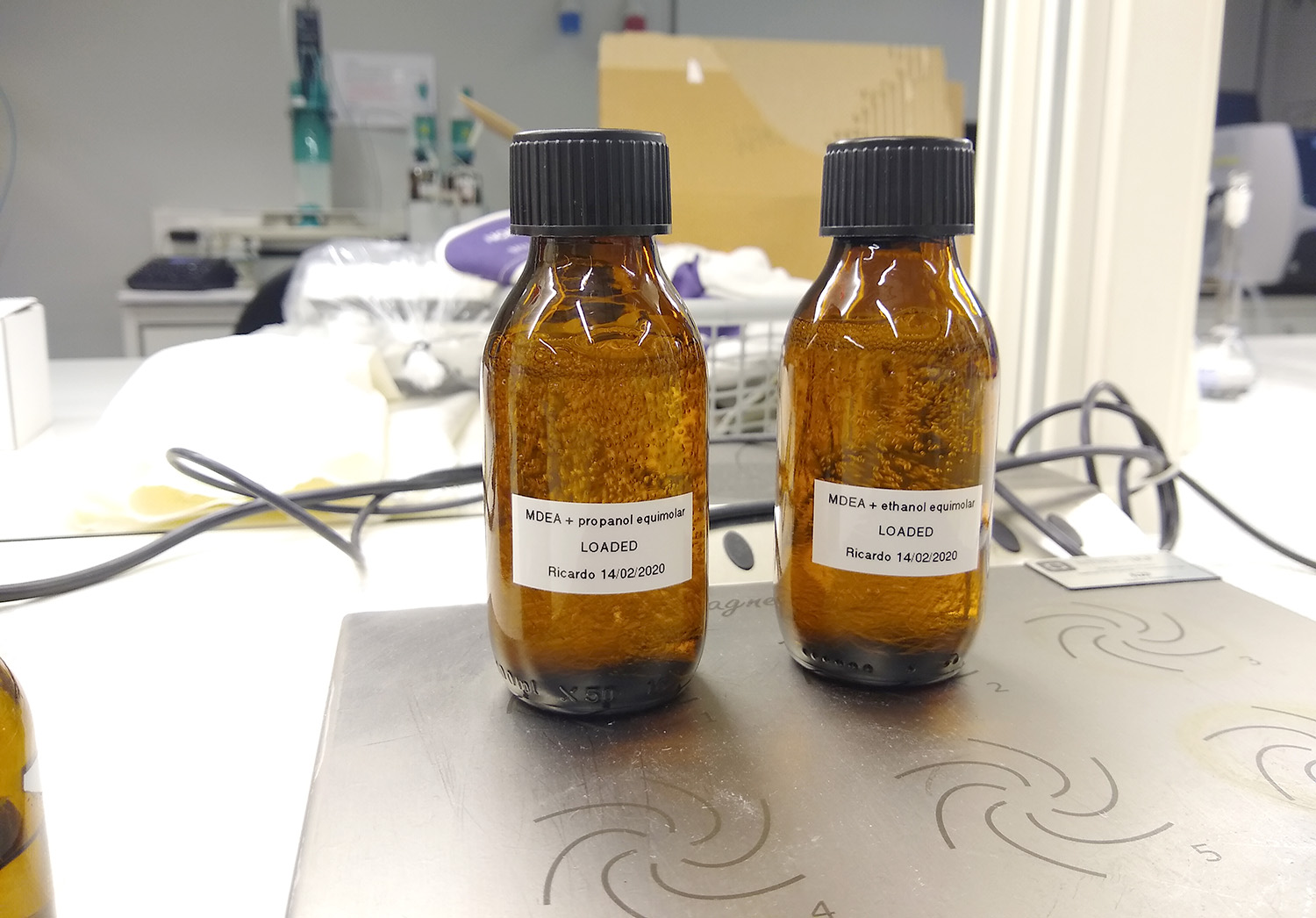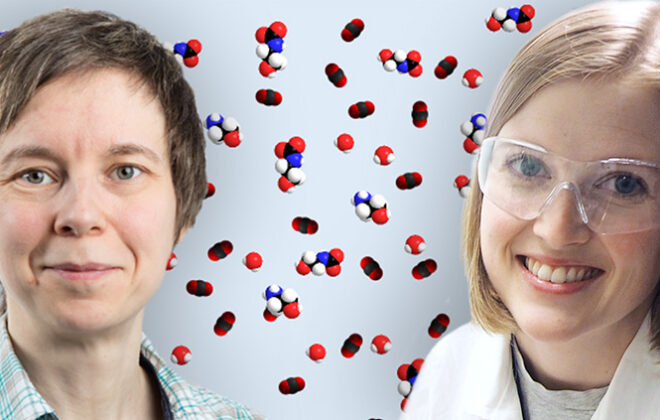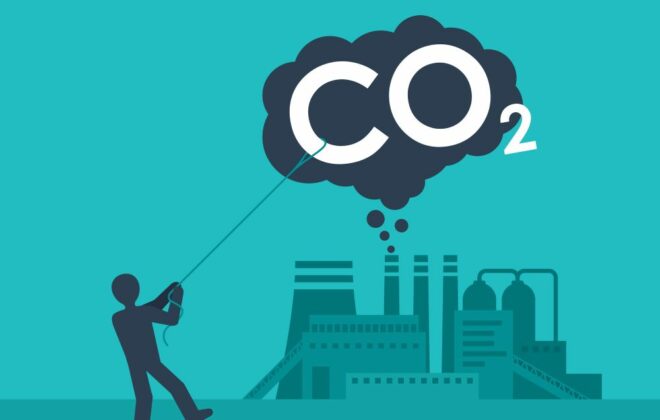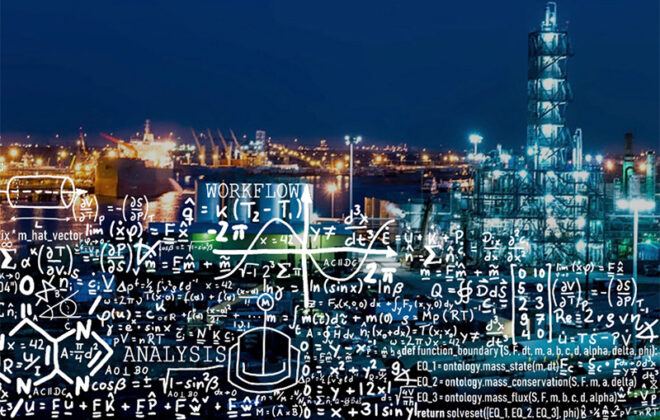Absorbing CO2 into solutions without water
Water is cheap, non-toxic and easily available. But is it the best choice for environmentally friendly CO2 capture with amine solvents?
Amine solvents have been industrially employed to capture CO2 for 80 years. In most processes, the gas containing CO2 is washed inside a packed tower with a solution of amines. These amines react with CO2, allowing us to collect and safely store it.
Many amine solvents contain water, but not all of them. Liquid amine absorbents that have water replaced by an organic co-solvent are commonly called water-lean solvents, and they have driven a respectable amount of research in the past few years.
The development of liquid amine solvents
In their chapter on solvent-based absorption of CO2 for the book Carbon Capture and Storage (RSC Publishing, 2019), David Heldebrant and Jotheeswari Kothandaraman write a nice little story on how liquid amine solvents were first developed.
According to the authors, most chemical reactions that consume CO2 are acid-base reactions, with CO2 being the acid. Thus, a base is required for fixing CO2.
At first, engineers investigated cheap inorganic bases such as lime (Ca(OH)2) and limestone (CaCO3), which happen to be solids. Dissolving these solids into liquids came out of the requirement of obtaining liquid solvents, which are easier to handle and operate. For that, they needed a co-solvent.
The first co-solvent proposed was, naturally, water. Water is “the cheapest and most abundant solvent available”, it is “non-flammable and non-toxic”, “capable of dissolving nearly all inorganic bases”, etc.
Afterwards, lime and limestone lost favor to organic alkanolamines in amine scrubbing plants. These alkanolamines are typically liquids at room temperature, but dissolving them into water is still a sensible practice for avoiding all sorts of operational troubles.
A better alternative than water
This [the above] tale is very interesting to me because it portrays the use of water as co-solvent for amine absorbents almost as incidental.
Water does have inarguably its strengths, but at the end of the day the use of water is first and foremost a contingency of its price and availability. There is nothing preventing the discovery of a new co-solvent that might work just as well (if not better) in the formulation of amine absorbents.
Furthermore, since engineers have been using alkanolamines instead of inorganic bases for amine scrubbing plants, the possibilities of finding a suitable alternative to water as co-solvent have increased. Now one simply needs to propose an organic liquid that is miscible with these alkanolamines and presto, we have a new solvent candidate.
A blessing and a curse
Clearly, there are thousands – or rather, innumerable organic compounds yet to be mixed with alkanolamines and tested for their CO2 absorption properties. For a researcher, this explosion of possibilities is both a blessing and a curse.
A blessing because one is bound to find at least one organic solvent that, when mixed with an alkanolamine, delivers an absorbent that is just right for CO2 capture. One researcher has nicknamed this mixture a Goldilocks solvent in reference to the tale of Goldilocks and the three bears.
A Goldilocks solvent is exactly what I had been looking for during my PhD research. All I had to do was to test one thousand organic compounds. Thus, the curse.
A deeper understanding
I am being facetious, of course. Four years after starting my research and ready to defend my PhD thesis, I have tested about 35 absorbent mixtures for CO2 capture – a far cry from one thousand, as one can attest.
And yet, I have tried to direct my research into providing a deeper understanding on what co-solvent properties really affect the characteristics of liquid absorbents, and assess their effects on CO2 capture performance.
The properties investigated
My studies have focused on thermodynamic capacities, mass transfer rates, enthalpies of absorption, reaction mechanisms, and physical properties such as viscosity and density, always comparing aqueous solvents to water-lean solvents.
I tried to pick organic co-solvents that were promising and representative of overall trends in CO2 capture research – for example, organic solvents that are themselves good physical absorbents of CO2.
Bookending my dissertation, I have prepared an extensive review on all the available literature data on water-lean solvents and, to boot, a mathematical parametric analysis on co-solvent properties and their effect on overall CO2 capture plant performances.
I am particularly proud of the work carried out on alkylcarbonate formation in nonaqueous solvents with hindered amines, a mechanism that is still in need of more clarification and analysis.
Water still on top?
With all being said, I return to David Heldebrant and Jotheeswari Kothandaraman with a new perspective. My overall impression after these years of research is that water is the outlier, and will remain so for quite a while.
In my investigation, no co-solvent has managed to couple as many good qualities as water did, and many of the promised advantages of water-lean solvents brought novel unforeseen challenges upon further inspection. To be quite clear, this does not mean a dead-end for water-lean solvents, but it does indicate that the difficulties might well overshadow the advantages.
I have developed a new appreciation for water. At the same time, understanding water made me understand the world a little bit more.
I have thoroughly enjoyed this journey, and I am very glad that I could build new knowledge together with my dear colleagues at the Department of Chemical Engineering.

Ricardo Ramos Wanderley
Ricardo Ramos Wanderley is a PhD candidate at the Department of Chemical Engineering
Tags In
Search
Søk
Categories
- Arctic Research
- Arkitektur
- Bærekraft
- Bioingeniørfag
- Biologi
- Biology
- Biomedical Laboratory Science
- Biotechnology
- Bioteknologi
- Chemical Engineering
- Chemistry
- Climate
- Computer Science
- Datateknologi
- Digital
- Elektronikk
- Energi
- Energi
- Energy
- Engineering
- Engineering
- Environment
- Food Science
- Forskning
- Fysikk
- Fysikk
- Havbruk
- Informasjonsteknologi
- Informasjonsteknologi
- Ingeniørvitenskap
- Kjemi
- Kjemisk prosessteknologi
- Kjemisk prosessteknologi
- Kreftbehandling
- Kybernetikk
- Marine Technology
- Materialer
- Materials Science
- Materialteknologi
- Matvitenskap
- Meninger
- Miljø
- Min ph.d.
- My PhD
- My PhD
- My postdoc
- Nanotechnology
- Nanoteknologi
- Ocean
- Oil and gas
- Physics
- Research
- Simulering og visualisering
- Spør en forsker
- Studentliv
- Sustainability
- Ukategorisert
- Universitetsliv
- University Life
Kategorier
- Arctic Research
- Arkitektur
- Bærekraft
- Bioingeniørfag
- Biologi
- Biology
- Biomedical Laboratory Science
- Biotechnology
- Bioteknologi
- Chemical Engineering
- Chemistry
- Climate
- Computer Science
- Datateknologi
- Digital
- Elektronikk
- Energi
- Energi
- Energy
- Engineering
- Engineering
- Environment
- Food Science
- Forskning
- Fysikk
- Fysikk
- Havbruk
- Informasjonsteknologi
- Informasjonsteknologi
- Ingeniørvitenskap
- Kjemi
- Kjemisk prosessteknologi
- Kjemisk prosessteknologi
- Kreftbehandling
- Kybernetikk
- Marine Technology
- Materialer
- Materials Science
- Materialteknologi
- Matvitenskap
- Meninger
- Miljø
- Min ph.d.
- My PhD
- My PhD
- My postdoc
- Nanotechnology
- Nanoteknologi
- Ocean
- Oil and gas
- Physics
- Research
- Simulering og visualisering
- Spør en forsker
- Studentliv
- Sustainability
- Ukategorisert
- Universitetsliv
- University Life




